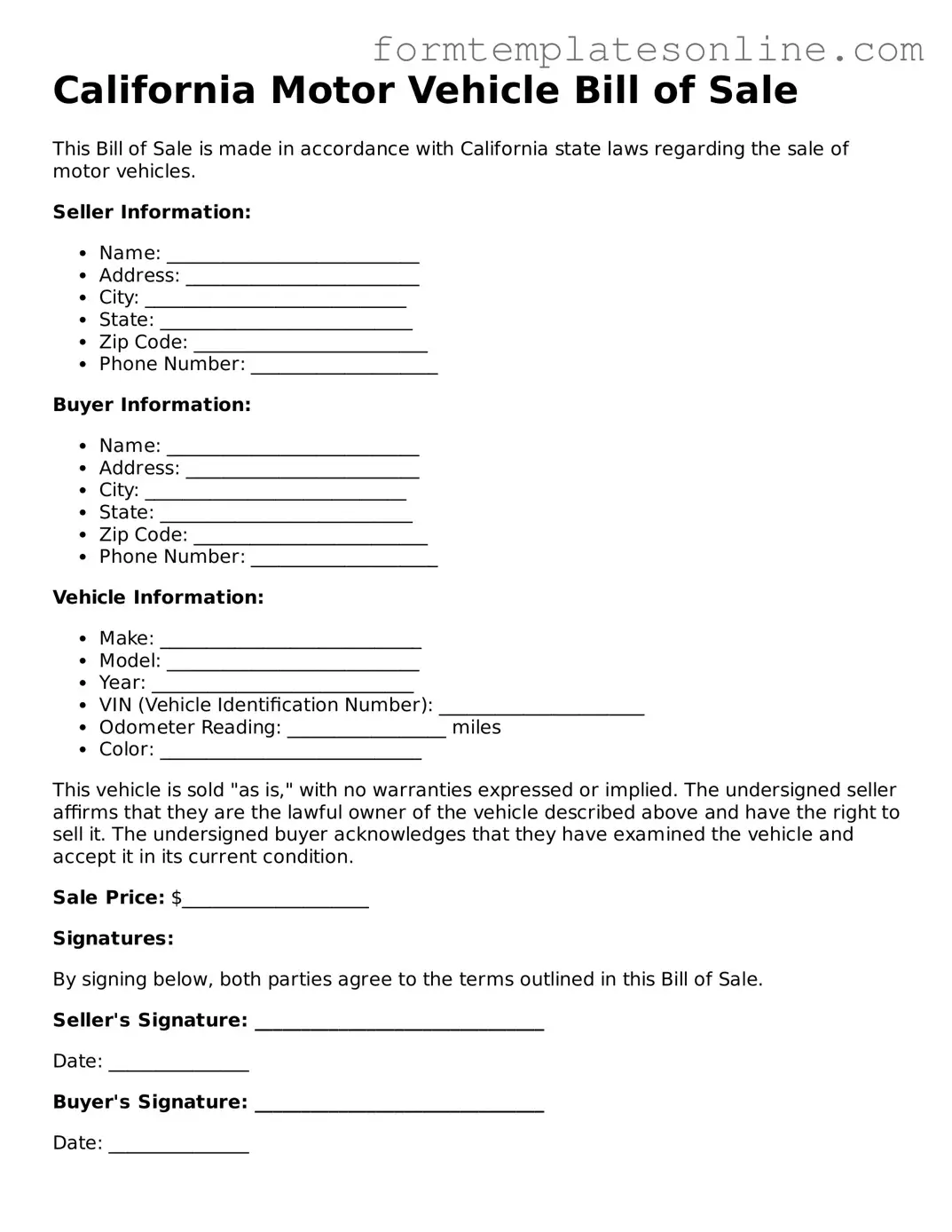What is a California Motor Vehicle Bill of Sale?
A California Motor Vehicle Bill of Sale is a legal document that records the sale of a vehicle between a buyer and a seller. It serves as proof of the transaction and includes important details about the vehicle and the parties involved.
Why do I need a Bill of Sale?
A Bill of Sale is essential for several reasons. It provides evidence of the sale, protects both the buyer and seller in case of disputes, and may be required for registration or title transfer at the Department of Motor Vehicles (DMV).
What information is included in a Bill of Sale?
The Bill of Sale typically includes the names and addresses of the buyer and seller, the vehicle identification number (VIN), make, model, year, sale price, and date of sale. Additional details, such as odometer reading and any warranties, may also be included.
Is a Bill of Sale required in California?
While a Bill of Sale is not legally required in California, it is highly recommended. The DMV may ask for it during the title transfer process, and having one can help clarify the terms of the sale.
How do I complete a Bill of Sale?
To complete a Bill of Sale, both the buyer and seller should fill out the form with accurate information. Each party should sign and date the document. It is advisable to keep a copy for personal records.
Can I create my own Bill of Sale?
Yes, you can create your own Bill of Sale as long as it includes all necessary information. However, using a standard form can help ensure that you do not miss any critical details.
Where can I obtain a California Bill of Sale form?
You can obtain a California Bill of Sale form from the DMV website, local DMV offices, or various online legal form providers. Make sure to use the most current version to ensure compliance with state requirements.
Do I need a notary for the Bill of Sale?
A notary is not required for a Bill of Sale in California. However, having the document notarized can add an extra layer of security and legitimacy to the transaction.
What should I do after completing the Bill of Sale?
After completing the Bill of Sale, the seller should provide the buyer with a copy. The buyer should then use it to register the vehicle and transfer the title at the DMV. Keeping a copy for your records is also advisable.
What if there are issues after the sale?
If issues arise after the sale, such as disputes over the condition of the vehicle or payment, the Bill of Sale can serve as a critical piece of evidence. It is important to document any communication and keep all related paperwork.
